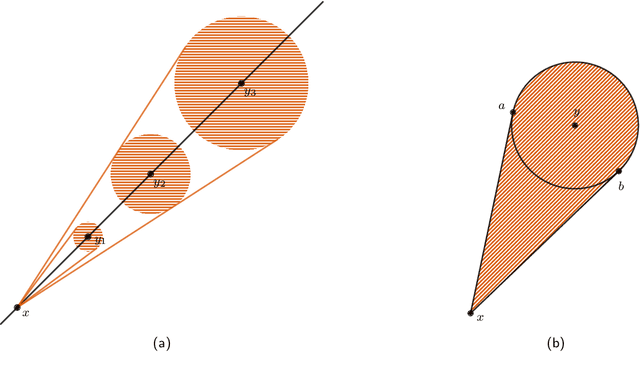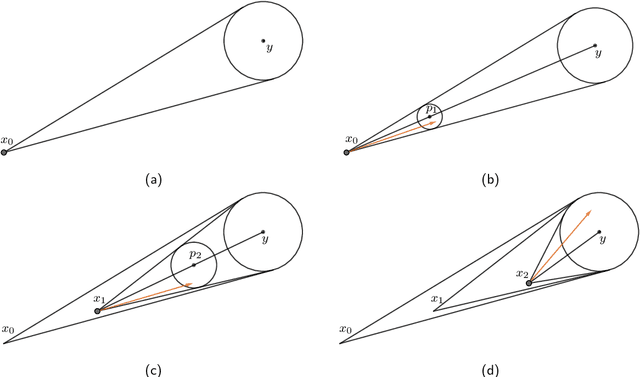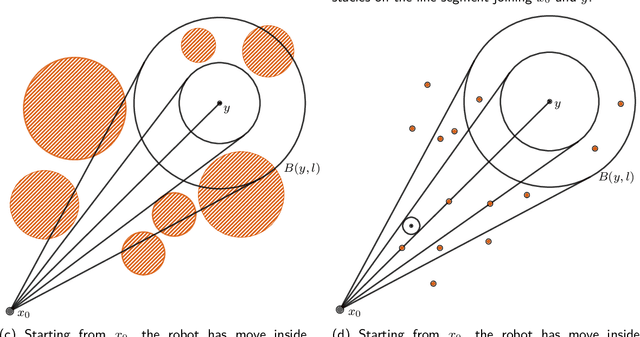Buddhadeb Sau
Space optimal and asymptotically move optimal Arbitrary Pattern Formation on rectangular grid by asynchronous robot swarm
Dec 08, 2022Abstract:Arbitrary pattern formation (\textsc{Apf}) is a well-studied problem in swarm robotics. The problem has been considered in two different settings so far; one is in a plane and another is in an infinite grid. This work deals with the problem in an infinite rectangular grid setting. The previous works in literature dealing with \textsc{Apf} problem in infinite grid had a fundamental issue. These deterministic algorithms use a lot of space in the grid to solve the problem mainly because of maintaining the asymmetry of the configuration or to avoid a collision. These solution techniques can not be useful if there is a space constraint in the application field. In this work, we consider luminous robots (with one light that can take two colors) to avoid symmetry, but we carefully designed a deterministic algorithm that solves the \textsc{Apf} problem using minimal required space in the grid. The robots are autonomous, identical, and anonymous and they operate in Look-Compute-Move cycles under a fully asynchronous scheduler. The \textsc{Apf} algorithm proposed in [WALCOM'2019] by Bose et al. can be modified using luminous robots so that it uses minimal space but that algorithm is not move-optimal. The algorithm proposed in this paper not only uses minimal space but also asymptotically move-optimal. The algorithm proposed in this work is designed for an infinite rectangular grid but it can be easily modified to work in a finite grid as well.
Pattern Formation by Robots with Inaccurate Movements
Oct 20, 2020



Abstract:\textsc{Arbitrary Pattern Formation} is a fundamental problem in autonomous mobile robot systems. The problem asks to design a distributed algorithm that moves a team of autonomous, anonymous and identical mobile robots to form any arbitrary pattern $F$ given as input. In this paper, we study the problem for robots whose movements can be inaccurate. Our movement model assumes errors in both direction and extent of the intended movement. Forming the given pattern exactly is not possible in this setting. So we require that the robots must form a configuration which is close to the given pattern $F$. We call this the \textsc{Approximate Arbitrary Pattern Formation} problem. We show that with no agreement in coordinate system, the problem is unsolvable, even by fully synchronous robots, if the initial configuration 1) has rotational symmetry and there is no robot at the center of rotation or 2) has reflectional symmetry and there is no robot on the reflection axis. From all other initial configurations, the problem is solvable by 1) oblivious, silent and semi-synchronous robots and 2) oblivious, asynchronous robots that can communicate using externally visible lights.
 Add to Chrome
Add to Chrome Add to Firefox
Add to Firefox Add to Edge
Add to Edge